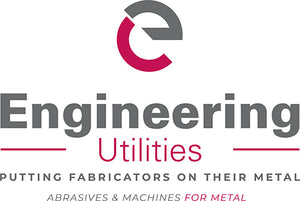Ultimate Guide to Electrochemical Marking & Etching
Electrochemical marking and etching is a process that is used on metal parts and machinery to make permanent markings for several reasons. These markings can be used for traceability, branding, and legal compliance. The marking types can range from QR codes to serial numbers and crucial product information, making it an essential process.
The Differences Between Marking & Etching
Marking and etching are terms that are often used interchangeably when people discuss metal branding processes however, they are two different processes.
- Electrochemical marking is when a dark imprint is created on the surface of the metal without altering its upper layer. This is done by passing a small electrical current through the metal causing the surface to oxidise.
- Etching is when a very small incision is created on the metal surface, this removes and consequently alters the metal surface slightly. This is done by a chemical solution dissolving part of the metal.
The main difference between the two processes is the depth of the marking that is created. Electrochemical marking doesn’t create a change of depth in the surface layer, making it useful when markings need to be easily readable — such as for tracing and branding. Etching, on the other hand, creates a shallow adjustment in the surface and is better suited for applications that are likely to be exposed to harsh environments.
When is Electrochemical Marking & Etching Used?
There are endless examples of when electrochemical marking may be used across a range of different industries, such as:
- Medical industry - electrochemical marking is used to apply identification codes, logos and serial numbers to ensure correct storage, usage and sterilisation.
- Tools & manufacturing - marking is used for identification, branding and quality control of gauges, hand tools & cutlery etc.
- Aerospace industry - marking is utilised during the manufacturing process of engine components, turbine blades and more.
What is the Electrochemical Marking Process?
Despite sounding slightly complicated, the process of marking metal products, whether that be electrochemical marking or etching, is actually quite simple. Here’s the basic run-down of the steps involved.
- Create the design and print the stencil
- Clean the surface to prepare for the stencil
- Apply the electrolyte fluid & place down the stencil in the desired position
- Perform the marking or etching process using the electrode head
- After the process has finished, neutralise the surface.
TIG Brush Electrochemical Marking and Etching Solutions at Engineering Utilities
Here at Engineering Utilities, we have everything you need to solve your marking and etching problems. Our TIG Brush machines and accessories are designed to provide you with the best possible results, regardless of your application. We also offer a wide range of Tig Brush fluids to meet your specific needs.
To learn more about our electrochemical marking and etching solutions, please visit our website or contact us today.
